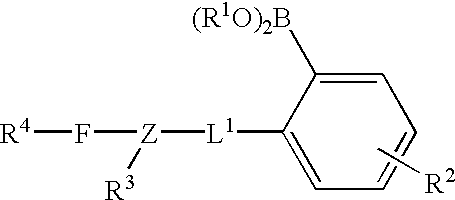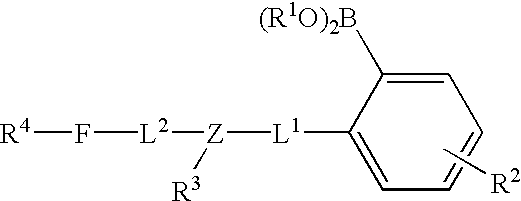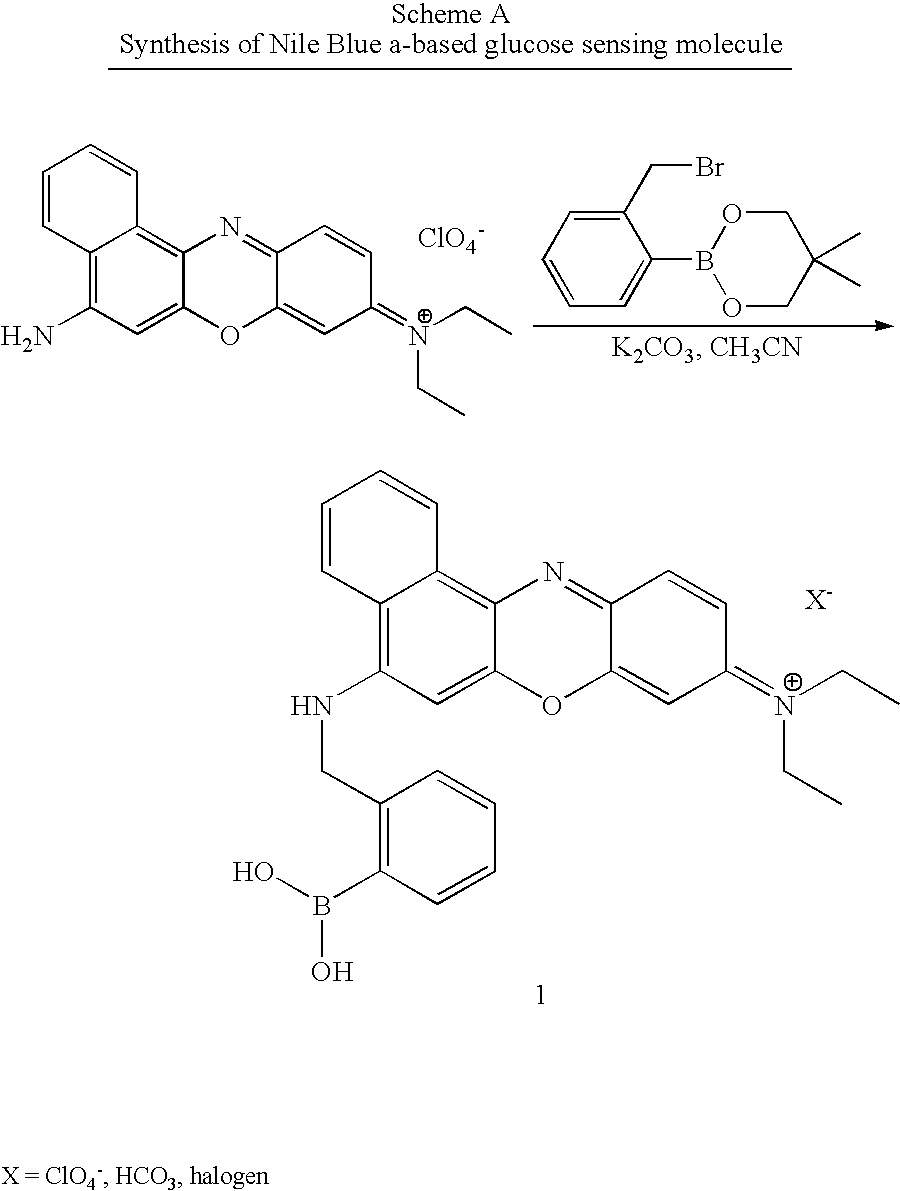Long wave fluorophore sensor compounds and other fluorescent sensor compounds in polymers
a technology of fluorophore and polymer, which is applied in the field of fluorescent biosensor molecules, can solve the problems of poor fluorescence transmission through skin at visible wavelengths less than about 500 nm, inability to accurately measure glucose levels of patients, and inability to meet patient blood glucose levels. , to achieve the effect of improving the accuracy of measurement of analyte concentration, improving the transmission of signal through skin, and prolonging the wavelength
- Summary
- Abstract
- Description
- Claims
- Application Information
AI Technical Summary
Benefits of technology
Problems solved by technology
Method used
Image
Examples
Embodiment Construction
1. Typical Method for Making an Oxazine-Based Boronate Molecule of the Invention
The following example outlines typical synthetic steps for making particular embodiments of the oxazine-based boronate molecules of the invention.
Synthesis: Synthesis of 1 was accomplished by reacting Nile Blue A perchlorate with neopentylglycol-protected 2-bromomethyl phenyl boronic acid in refluxing acetonitrile overnight (Scheme A). ##STR3##
Results: After work-up, the reaction was concentrated to dryness. A sample of the blue residue (.about.1 mg), dissolved in DMSO (1 ml), was aliquoted (100 .quadrature. L) and dissolved in PBS (20 mL). A sample PBS solution (3 mL) contained in a cuvette and irradiated at 621 nm, gave rise to the appearance of a maximum emission peak at 671 nm. Successive additions of glucose (150 mg / dL), added to the cuvette, led to an increase in excitation intensity, at 671 nm, after each addition. Shown in Figure C are the results. The first addition of glucose gave rise to a 7.5...
PUM
| Property | Measurement | Unit |
|---|---|---|
| maximum wavelength | aaaaa | aaaaa |
| maximum wavelength | aaaaa | aaaaa |
| excitation wavelength | aaaaa | aaaaa |
Abstract
Description
Claims
Application Information
 Login to View More
Login to View More - R&D
- Intellectual Property
- Life Sciences
- Materials
- Tech Scout
- Unparalleled Data Quality
- Higher Quality Content
- 60% Fewer Hallucinations
Browse by: Latest US Patents, China's latest patents, Technical Efficacy Thesaurus, Application Domain, Technology Topic, Popular Technical Reports.
© 2025 PatSnap. All rights reserved.Legal|Privacy policy|Modern Slavery Act Transparency Statement|Sitemap|About US| Contact US: help@patsnap.com



